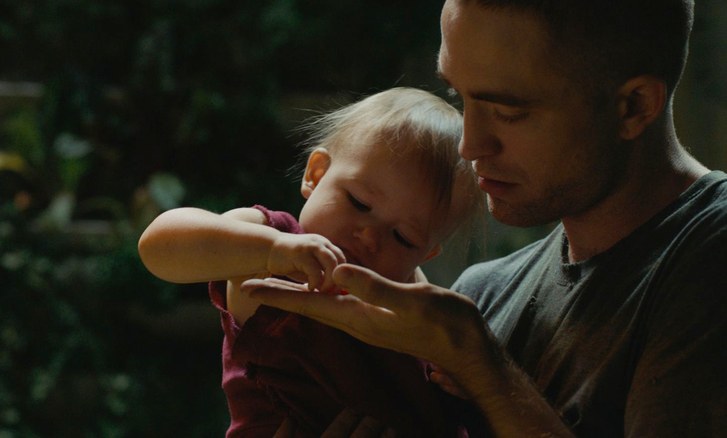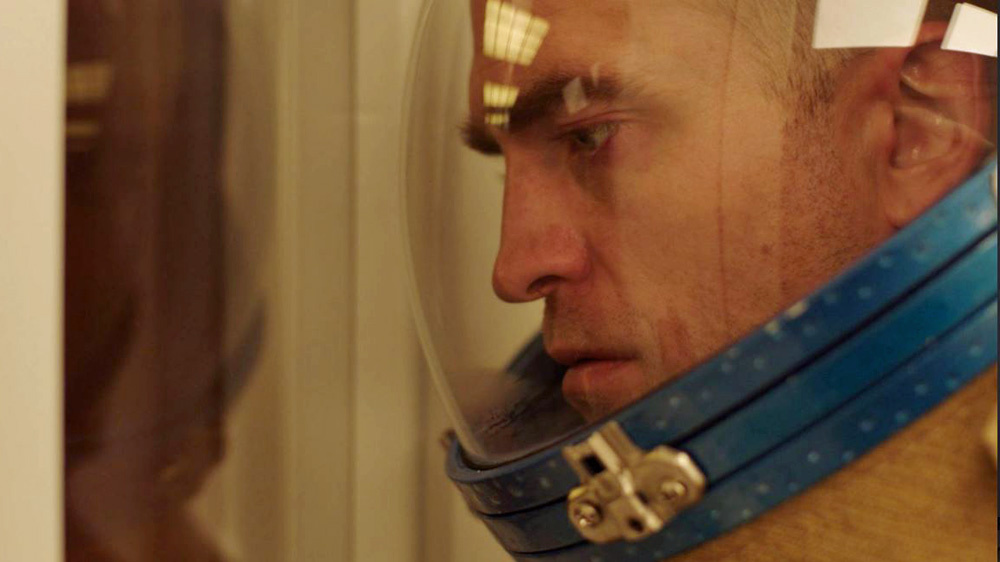In a bit of surprising news, it’s been unofficially confirmed that Robert Pattinson will be the next caped crusader in director Matt Reeves’ The Batman. This is not surprising because Pattinson is a stranger to mainstream fare; he first came on our radar through Harry Potter and Twilight. It’s surprising because that’s not at all the type of thing Pattinson has been doing lately. Lately he’s been making movies like Claire Denis’ sci-fi mindbender High Life. In a genre that is often mainstream, High Life is anything but.
Speaking of Batman, we called Interstellar “Christopher Nolan’s 2001: A Space Odyssey,” and are fond of using similar language whenever a director makes his or her first space movie, whether or not it is particularly artsy or ponderous. Denis has got all those bases covered and then some in a film that feels like a particular departure for the heretofore consummately terrestrial director. A French filmmaker with more than a dozen features to her credit over 30 years, Denis has consistently focused on realistic scenarios involving strained and dysfunctional relationships. She’s also 73, which makes a voyage into space seem like an even less likely change of gears at this stage. Her independent spirit, though, is as fierce as ever.
Pattinson plays Monte, a man hurtling through space on a ship that looks kind of like a wooden building. The hurtling is relative, of course, as the actual shipboard experience is quite serene. Monte does day-to-day activities like maintaining the ship and the lush garden that is meant to be sustaining him and his young daughter, who is less than a year old. For quite a long time we don’t know who Monte is or what he’s doing there, but it’s clear there used to be more of his crew. Where they are now will be revealed shortly.
From here things proceed non-chronologically, as we begin to see what came before Monte’s current moment in time, and eventually, what comes after. Also on board were Dr. Dibs (Juliette Binoche), who was conducting experiments on the rest of the crew to achieve a particular outcome, and Boyse (Mia Goth), an unstable fellow crew member. One of these women might have been baby Willow’s mother, or maybe they both were.
It’s an invigorating step forward for Denis even if it’s not always fully satisfying. It’s not that the narrative of High Life is hard to understand, as Denis doesn’t leave us at sea for too long before filling in the gaps, courtesy of some sparsely used narration by Monte. (In fact, the narration is one of the film’s weaker elements, feeling like a studio note … to the extent that a film like High Life gets studio notes.) It’s the dynamics she explores between characters that feel a little half-baked. The film takes regular tangents into the psychosexual, as the ship is equipped with a device the crew can use to pleasure themselves, and the scenario and its duration makes their interpersonal chemistry combustible. Sometimes, though, High Life has the feeling of being about something other than what it should be about. It can get tripped up by, and linger on, the wrong things.
It’s a pretty small complaint. Tarkovsky’s Solaris would be another obvious point of comparison for High Life, and that’s a film where the “what”s and the “why”s are a lot less important than the “how”s. High Life mostly follows that template. The non-chronological structure is one piece of evidence that what we’re experiencing in the moment is what Denis is trying to provide. Most of the time, that feeling is one of eerie discomfort. Enabling that mood is the cryptic way Denis parcels out information, and how the score underpins the film’s weird tangents and diversions. Stuart A. Staples, the lead singer of the band Tindersticks, has provided the music. He’s collaborated with Denis previously, and he’s as essential to this experience as the visual effects department.
For his part, Pattinson is as much a tool for Denis as a performer in his own right. Performance does not feel like an important aspect of High Life, which one could attribute to Denis directing her first feature that’s entirely in English. More charitably, it’s a byproduct of her artistic goals for the film. Pattinson may don the cape and the cowl for a while, but one suspects he’ll be back contributing to the chest of tools of great indie directors sooner rather than later.

